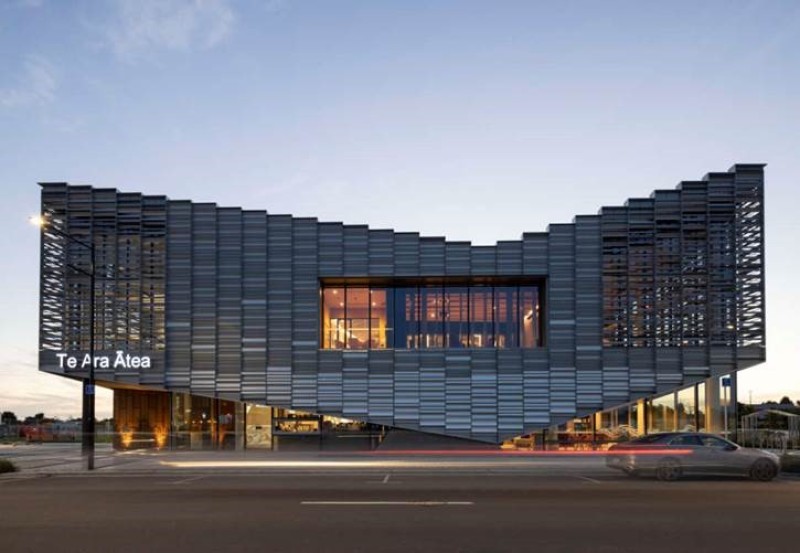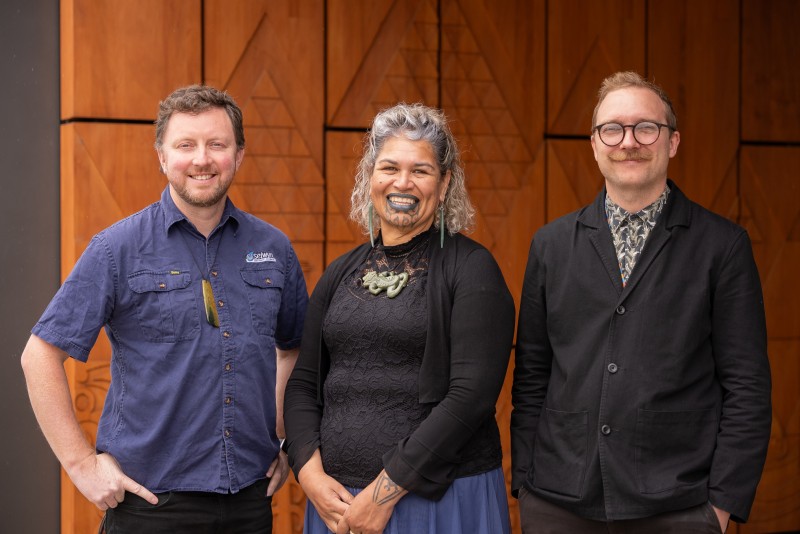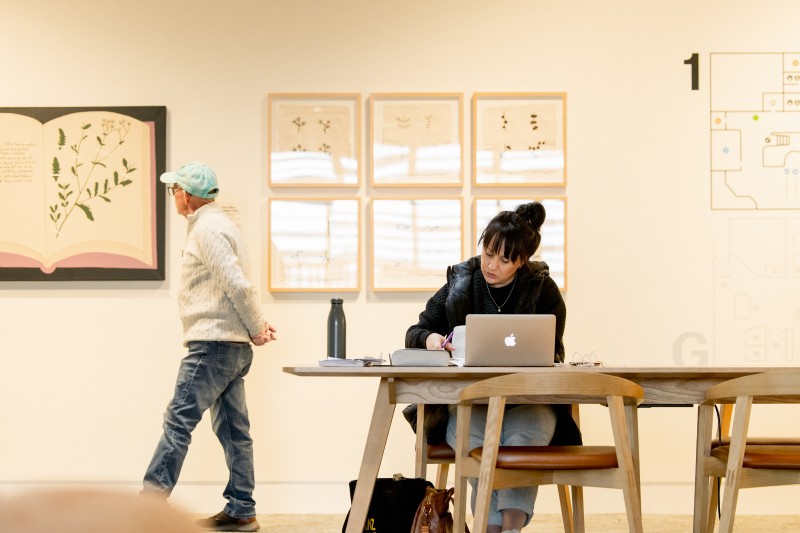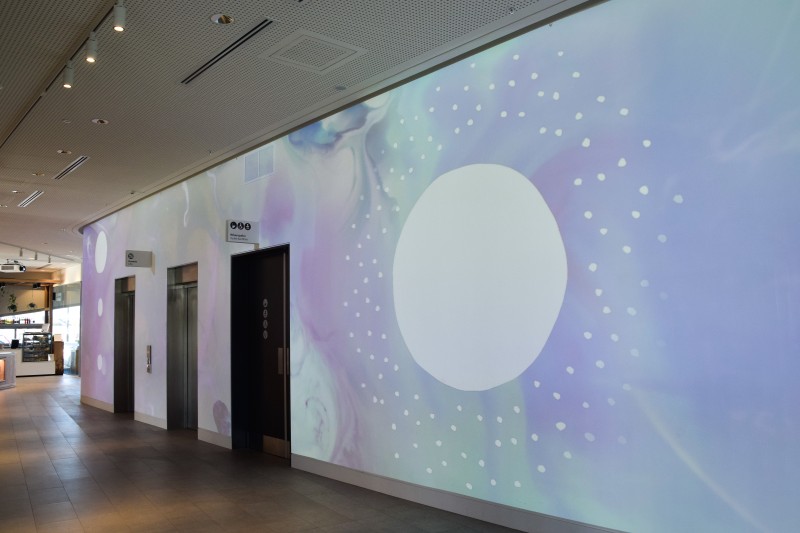In December 2021, when the Selwyn District’s mayor Sam Broughton cut the ribbon on Te Ara Ātea, a multipurpose library, museum, art gallery and community facility located in the Rolleston town centre, he felt a real sense of pride. Opening a building of this quality was a clear sign that the town had matured, both physically and culturally, and two years on, his pride has only increased.
“I love it,” he says. “I was there last night, and I went for a walk around it after our citizenship ceremony. It’s a beautiful building. It’s the inspiration for things.”
Broughton says Te Ara Ātea’s success is due in large part to the collaboration between the Selwyn District Council and mana whenua that has helped imbue it with a real richness and distinct sense of place.

He says there had been a lot of talk about what the council could do with the local hapū of Ngāi Te Ruahikihiki, but little had come to fruition, and he freely admits that engagement was lacking in previous councils.
“I’ve really tried to lean into [the partnership potential]. So, a key part was mana whenua being involved in this project from the beginning … This is about healing and a new age of cooperation with Ngāi Tahu.”
Nicki Moen had worked with Workshop E on the Foxton Te Awahou Nieuwe Stroom - a Māori, Dutch and Pākehā history museum, and acted as Head of Arts, Culture and Lifelong Learning at Selwyn District Council, was asked to develop a design brief for a new library and community facility in Rolleston in 2014.
At the time, there was a simple 300sqm library, but as one of the fastest growing regions in the country, it was felt “an anchor building” was needed as part of the city centre development plan.
A couple of years later, the local rūnanga prepared a cultural narrative for the council that talked about the importance of telling the story of the land and bringing the culture back out. These projects overlapped, and whereas in previous years the rūnanga may have been asked for a name after a building was completed, this was the first project to be co-designed. The name Te Ara Ātea, which translates as an unobstructed trail to the world and beyond, was gifted to the community early on.
Broughton says there was some controversy over the name when it was announced, with complaints to local media about the fact that it didn’t have an English translation or a literal description of what the building was for, but that has now subsided.
“As soon as you name it, you give it a theme,” says Puamiria Parata-Goodall, who worked on the cultural narrative and is now employed by the council. And that theme informs the design, the layout and the materials.
“For an architect, it’s gold,” she says, and because the story is integrated from the beginning, it’s part of the fabric of the building. “You can’t remove any element. It is grounded and balanced.”
She says her tupuna/ancestors came to the region because of Te Waihora (Lake Ellesmere) and early sketches of pa show storehouses on tall stilts. It was a landscape of abundance, and the storehouses were landmarks that could be seen from a distance.
“It came out of that kōrero and being able to see beyond the horizon. It was about that migration into and across the plains, and along the trails between mahinga kai,” she says.
Te Ara Ātea is another mahinga kai, she says, “a place to grow, harvest and nurture resources, whether that’s our matauranga/knowledge or the people and the place."
For Parata-Goodall, the project was about “rebalancing the narrative” and Broughton points to features like the bilingual signage, something that hadn’t been common in council buildings previously; the exterior wooden panels based on the work of Cath Brown that are not just building materials but pieces of art; the bronze tuna/eel sculpture Te Hekenga by artist Piri Cowie, you see when you enter; and the Te Waka Huia room that was inspired by the wooden boxes rangatira/leaders kept their treasures in.

Te Ara Ātea Mayor Sam Broughton, Puamiria Parata Goodall, Mat Logan
Much like the international movement to return treasures to their original homes, Te Ara Ātea now also has a pounamu pendant that was found on the Kaitōrete Spit and was made around 200 years ago. It had been in the Canterbury Museum collection since 1938, but when there was a place for it, “we called it home,” says Parata-Goodall.
Moen says the co-design process has given “a deep beauty and peace to this building, unlike any other project I’ve worked on in the country.”
“The building gets to you because it has been so carefully created. People can come in and find a place in it and be quite content. It’s perfect.”

Other elements in the building are unique to Selwyn, Broughton says, with a lot of the displays having a military focus and some of the landscaping inspired by rail corridors.
“That’s part of the recipe as well,” he says.
Mat Logan, Culture, Content and Learning Manager, says people moving to the district with young families were accustomed to the public amenities and art on offer in bigger cities, so it was about trying to meet those expectations. And many of them have also moved here recently, so it was also about placemaking and community building.
“How do we make them proud of the district and its histories and stories?”
Residents have good reason to be proud of the building itself: B foot traffic is up by 40% over 2022 and last year it was awarded the Local Government New Zealand Excellence Award for cultural wellbeing.
Outside the two-storey, 2,500sqm building, there is a youth recreation park, seating and a sensory garden designed by a local school. A sculpture created by Ngāi Tahu artist Dr Areta Wilkinson is set to be another spectacular addition to the area. Called ‘Toro Atua’ and part of the SCAPE public art project, it is inspired by the rock paintings of Te Waipounamu/South Island and is expected to be finished in April 2024.
“This is an enormous public artwork the scale of which Selwyn has never had before, and it will be a taonga for us to treasure,” says Logan.
“We wouldn’t have got the art project if we didn’t have Te Ara Ātea. It would have been some other art project of minor scale, without the storytelling or the meaning,” he says.
Council investment also tends to give the private market confidence and that’s certainly been the case in Rolleston.
“There was nothing else like this here, so how can we expect private developments and other buildings to go up if we don’t aim for scale,” says Broughton. “We had to lead it.”
The lessons learned in this project are being put into practice elsewhere, like libraries in smaller towns like Darfield and Leeston. Other new buildings in the region like Ag Research’s Tuhiraki building at Lincoln University or Lincoln’s flagship science building Waimarie have also embraced cultural narratives.
Te Ara Ātea really hit the mark from an iwi perspective, says Parata-Goodall, and it has also been a catalyst for a culture shift in council.
“When they experience it, they say ‘this is not all bad, this is kinda good’. Iwi engaging with the council was not a threat. So why don’t we build on this? We’re going to live the partnership, not just honour it. It’s not just what’s good for Māori, or good for this lot. It’s good for all of us.”
This has now led to experts from Ngāi Te Ruahikihiki, represented by its corporate entity Te Taumutu Rūnanga, being employed by the council to offer their cultural expertise across the organisation. Mana whenua have also been given representation at the council table, with full speaking rights but not voting rights.
Staff in the Arts, Culture and Lifelong Learning department have received training so they can share the story behind the name and the history of the region. Moen believes this deeper understanding and the connection to manaakitanga / hosting has helped to improve the customer experience, with satisfaction ratings increasing from 87% to 98%.

Te Ara Ātea Clara Wells projection wall video work
One major endorsement of the project is that Te Ara Ātea regularly hosts guests from the galleries, libraries, archives, and museums sector - and some of the public officials they’re trying to get funding from. They want to see if something similar could be done in their own region and while some ideas are transferable, especially to smaller cities and towns, Broughton says it can’t just be copied.
“I’m really proud of what we’ve done, but you need to tell your own story locally. Be inspired by what we’ve done but follow what mana whenua would like to see and do and stay true to your history.”
Design by committee is often seen as a bad thing. But if you frame in a different way, it’s all about taking people with you and establishing the right relationships from the start so that you get a better result at the end. It’s not just about early engagement, however. It’s also about continuous engagement, says Parata-Goodall, and it’s important to recognise that providing a cultural narrative is a form of consultancy that needs to be paid for.
“We’re saying the cultural narrative is part of the basic infrastructure,” she says. “The cultural elements are just as important as the sustainability of the building.”
Broughton agrees and says working closely with mana whenua is about respecting the way things should have been done in the past.
“There’s a healing aspect to that but it’s also about setting a future direction.”
And for Selywn, the future looks bright - and busy.
“There might be 40,000 people [in Rolleston] soon,” says Moen. “It’s a sprawling mass of grey roofs, so to have Te Ara Ātea at the centre is important. This has given Rolleston a heart. And maybe it’s given the district a heart, too.”
This series, bringing to life the benefits of local arts and culture investment, was created in partnership with Creative New Zealand Toi Aotearoa.
